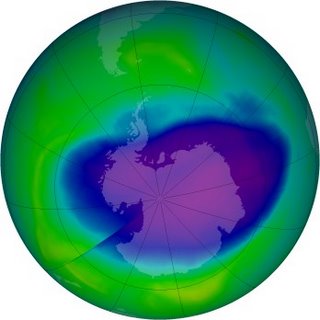About Me

- Name: U2Lorax
- Location: RDU, NC, United States
U2 fan, Caniac, idealist, dreamer, environmentalist, BTVS addict, hockey nut, computer impaired coffeeholic. Did I mention U2 fan? :)

Music Links
- Am. Coalition for Ethanol
- Blue Voice
- Debt.AIDS.Trade.Africa
- DOE E85 Info
- E85 Fuel
- Earth Day Network
- Earth Policy Institute
- Earth Trends
- Ecology
- Environmental Defense
- EPA
- Greenpeace
- Live 8
- Make Poverty History
- Music Rising
- NOAA
- NPR
- Ocean Conservancy
- One Campaign
- Pew Clmate Center
- PBS
- Save the Sea Turtle
- Save the World's Oceans
- Seaweb
- Sherman's Lagoon
- Sierra Club
- Solar Electric Light Fund
- Space Weather
Environment Links
- Blogfish - Fish, Oceans and Conservation
- Canes Country
- Deep Sea News
- Crime & Mystery Muse Needed
- Marine Conservation Blog
- Music Rising Blog
- One Campaign
- RED blog
Blog Links
- Mystery Writers Assoc.
Writing Links
Archives
- May 2005
- June 2005
- July 2005
- August 2005
- September 2005
- October 2005
- November 2005
- December 2005
- January 2006
- February 2006
- March 2006
- April 2006
- May 2006
- June 2006
- July 2006
- August 2006
- September 2006
- October 2006
- November 2006
- December 2006
- January 2007
- February 2007
- March 2007
- April 2007
- May 2007
- June 2007
- July 2007
- August 2007
- September 2007
- October 2007
- November 2007
- December 2007
- January 2008
- February 2008
- March 2008
- April 2008
- May 2008
- June 2008
- July 2008
- August 2008
- September 2008
- October 2008
- November 2008
- December 2008
- January 2009
- February 2009
- March 2009
- April 2009
- May 2009
- June 2009
- July 2009
- August 2009
- September 2009
- October 2009
- November 2009
- December 2009
- January 2010
- February 2010
- March 2010
- April 2010
- May 2010
- June 2010
- July 2010
- August 2010
- September 2010
- October 2010
- November 2010
- December 2010
- January 2011
- April 2011
- May 2012
This that and the other thing. Though there might be more of this than that. And little of the other things. Maybe.
Friday, October 20, 2006
Antarctic: Ozone Hole Largest Yet
The hole in the ozone layer above Antarctica has beaten the record size logged six years ago, the United Nations' weather agency says.
The World Meteorological Organisation (WMO) says data from the US National Aeronautics and Space Administration (NASA) shows the hole in the atmospheric layer that guards the world against dangerous ultraviolet light has grown to 29.5 million square kilometres.
"This is the most serious on record," Mark Oliver, spokesman for the WMO, said. ABC News
"Such significant ozone loss requires very low temperatures in the stratosphere combined with sunlight. This year’s extreme loss of ozone can be explained by the temperatures above Antarctica reaching the lowest recorded in the area since 1979," European Space Agency Atmospheric Engineer Claus Zehner said.


The Dobson Unit (DU) is the unit of measure for total ozone. If you were to take all the ozone in a column of air stretching from the surface of the earth to space, and bring all that ozone to standard temperature (0 Celsius) and pressure (1013.25 millibars, or one atmosphere, or “atm”), the column would be about 0.3 centimeters thick. Thus, the total ozone would be 0.3 atm-cm. To make the units easier to work with, the “Dobson Unit” is defined to be 0.001 atm-cm. Our 0.3 atm-cm would be 300 DU.
The above image comes from the Ozone Hole Watch web site. As does the definition of The Dobson Unit (DU), which is used to measure the thickness of the ozone layer. I've included more links below so yall can peruse as you will. Serious news for a Friday entry.
NOAA Ozone Page
The Ozone Hole
British Antarctic Survey
World Meterological Organization: Global Atmosphere Watch
The World Meteorological Organisation (WMO) says data from the US National Aeronautics and Space Administration (NASA) shows the hole in the atmospheric layer that guards the world against dangerous ultraviolet light has grown to 29.5 million square kilometres.
"This is the most serious on record," Mark Oliver, spokesman for the WMO, said. ABC News
"Such significant ozone loss requires very low temperatures in the stratosphere combined with sunlight. This year’s extreme loss of ozone can be explained by the temperatures above Antarctica reaching the lowest recorded in the area since 1979," European Space Agency Atmospheric Engineer Claus Zehner said.


The Dobson Unit (DU) is the unit of measure for total ozone. If you were to take all the ozone in a column of air stretching from the surface of the earth to space, and bring all that ozone to standard temperature (0 Celsius) and pressure (1013.25 millibars, or one atmosphere, or “atm”), the column would be about 0.3 centimeters thick. Thus, the total ozone would be 0.3 atm-cm. To make the units easier to work with, the “Dobson Unit” is defined to be 0.001 atm-cm. Our 0.3 atm-cm would be 300 DU.
The above image comes from the Ozone Hole Watch web site. As does the definition of The Dobson Unit (DU), which is used to measure the thickness of the ozone layer. I've included more links below so yall can peruse as you will. Serious news for a Friday entry.
NOAA Ozone Page
The Ozone Hole
British Antarctic Survey
World Meterological Organization: Global Atmosphere Watch
